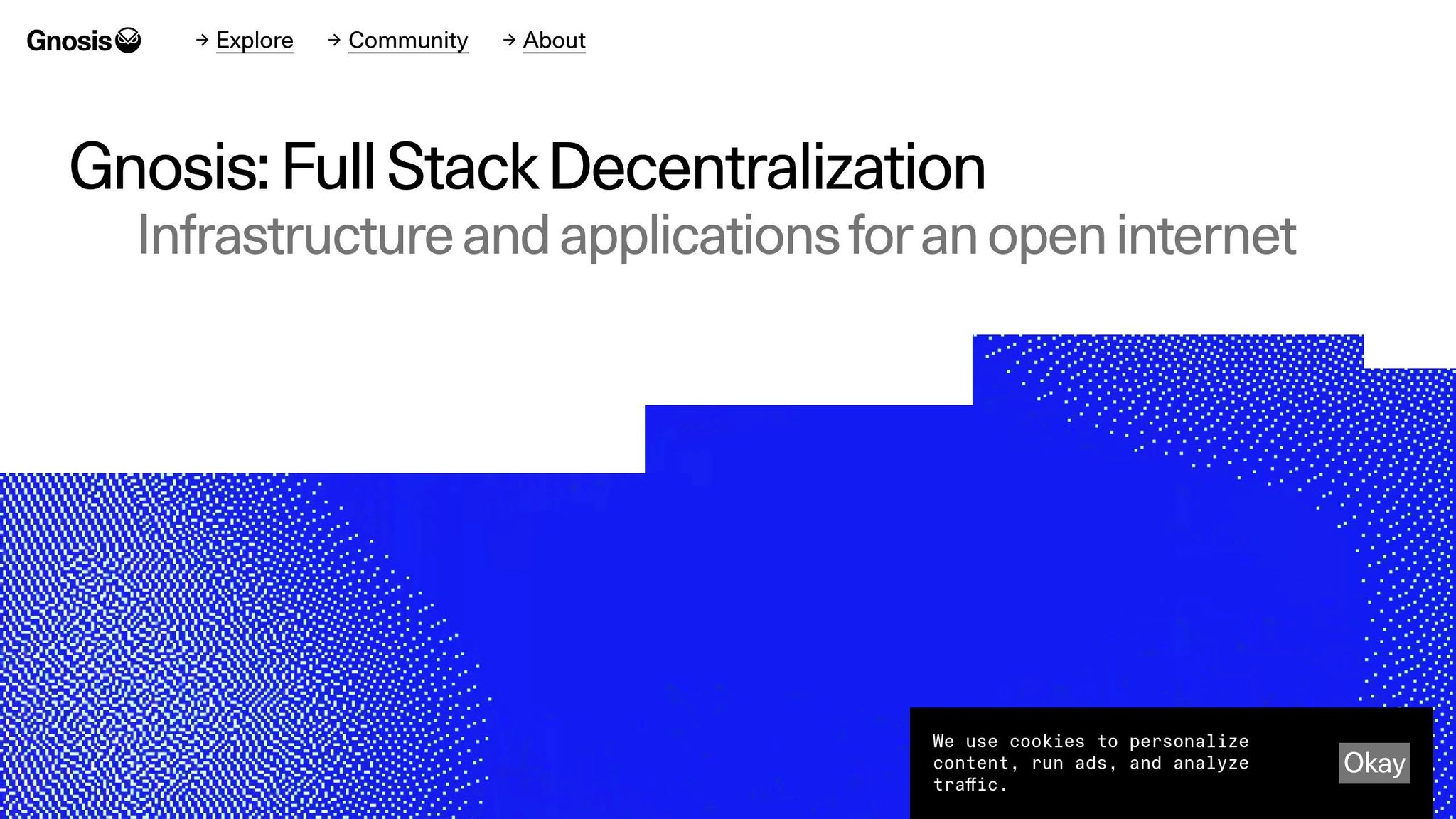How Multi-Signature Wallets Secure DeFi Transactions

Over $2.2 billion in cryptocurrency was stolen in 2024 alone. Multi-signature (multisig) wallets are a powerful solution to secure your digital assets. These wallets require multiple approvals to authorize transactions, reducing theft risks and ensuring better control.
Why Multisig Wallets Matter:
How They Work:
Quick Comparison: Single vs. Multi-Signature Wallets
Feature
Single-Signature Wallet
Multi-Signature Wallet
High risk
Low risk
Funds lost
Recoverable
High
Low
Limited
Complete
Bottom Line:
Multisig wallets are a must for safeguarding DeFi assets. Start by testing a trusted wallet like Gnosis Safe and use hardware wallets for added security. With these tools, you can protect your funds, ensure accountability, and reduce risks in the fast-evolving DeFi space.
Gnosis Safe Tutorial - How To Use MultiSig Wallet In DEFI

How Multi-Signature Wallets Work
Multi-signature wallets add an extra layer of security to DeFi transactions by requiring multiple parties to approve each transaction. This setup plays a key role in creating a secure environment for decentralized finance.
The "M-of-N" Signature Model
At the heart of multi-signature wallets is the "M-of-N" signature model. In this system, a certain number of approvals (M) are required out of a total number of keys (N) to authorize a transaction. For instance, a 3-of-5 setup would need three signatures out of five possible keys. Smaller teams often use simpler configurations like 2-of-3, while larger organizations may opt for more intricate setups. While increasing the number of required approvals boosts security, it can also slow down the transaction process. A real-world example of this is Bitfinex's cold storage wallet, which uses a 3-of-6 multisig setup. As of December 2017, this wallet held 141,177 BTC, valued at roughly $1.5 billion at the time.
Transaction Approval Steps
Using the "M-of-N" model, transactions follow a detailed approval process. When a transaction is initiated from a multi-signature wallet, it doesn’t immediately get recorded on the blockchain. Instead, it goes through a series of steps to gather the required number of signatures. Once the necessary approvals are collected, the multisig smart contract verifies that these signatures match the associated public keys. Only then is the transaction broadcast to the blockchain. For example, in a 2-of-3 setup, one party might initiate the transaction, but it still requires an additional signature to move forward.
Public Record Keeping
One of the standout benefits of multi-signature wallets is the transparency they provide. Every transaction is logged on the blockchain, creating a clear and public audit trail. This transparency not only supports compliance but also enhances accountability. Currently, over 60% of major digital asset custodians use multisig wallets and threshold signatures, which can lower the risk of internal theft by as much as 80% compared to single-user wallets. For effective governance, it’s important to document the signature policy in plain language. This ensures clarity for onboarding and audits, strengthening both security and regulatory adherence.
Step-by-Step Guide: Setting Up and Using a Multi-Signature Wallet
Setting up a multi-signature wallet for DeFi transactions takes careful planning, but the added security and control make it well worth the effort. Here's a detailed guide to help you through the process.
Setting Up Your Multi-Signature Wallet
Start by deciding on the right M-of-N configuration for your needs. This refers to how many signatures (M) are required out of the total number of signers (N) to approve a transaction. For smaller teams, a 2-of-3 setup often strikes the right balance between security and efficiency. Larger organizations may lean toward configurations like 3-of-5 or 4-of-7 for added security.
Pick a trusted wallet provider that supports multi-signature functionality. Safe (formerly Gnosis Safe) is a popular choice for DeFi protocols and DAOs, thanks to its strong security features and user-friendly design. In February 2025, Cyfrin.io published a detailed guide emphasizing the importance of choosing the right wallet provider, with Patrick Collins stating:
"Never use a regular wallet to manage protocol permissions or significant funds. Ever." - Patrick Collins, Cyfrin.io
Generate and distribute private keys securely. Use hardware wallets whenever possible, as they offer an extra layer of protection. After setting up your wallet, make sure recovery phrases are stored in separate, secure locations, such as fireproof safes or safety deposit boxes. Each signer should independently back up their recovery phrase, and you should maintain a master list of public keys and their respective owners.
Set an appropriate signature threshold based on your team's needs. While higher thresholds improve security, they can also slow down transactions. Consider how quickly your team needs to act on transactions and test different configurations on testnets before moving to the main network.
Once your wallet is configured, you're ready to start managing DeFi transactions using the multisig process.
Making DeFi Transactions with Multi-Sig Wallets
Using a multi-signature wallet to execute transactions requires coordination and careful attention to detail. Here's how the process works:
This process ensures transparency, as every step is recorded on-chain, creating an immutable audit trail.
Managing Private Keys Safely
After setting up your wallet and conducting transactions, maintaining strict control over your private keys is vital for long-term security. Here are some strategies to follow:
sbb-itb-d7b5bca
Security Benefits and DeFi Use Cases
Multi-signature wallets address a major vulnerability in traditional wallets by requiring multiple keys for transaction approval. By spreading this responsibility across several keys, they provide a stronger layer of protection for participants in the DeFi ecosystem.
Security Advantages Over Single-Signature Wallets
Unlike single-signature wallets, where a single compromised key can lead to a complete loss of funds, multi-signature wallets distribute the risk. This ensures that no single compromised key can jeopardize the entire wallet.
According to industry data, multisig solutions can reduce the risk of internal theft by up to 80% compared to single-user wallets. Additionally, if some keys are lost, the remaining co-signers can step in to recover funds, offering a level of resilience that single-signature wallets simply can't match.
Security Feature
Single-Signature Wallet
Multi-Signature Wallet
Theft Protection
High risk – one key compromises everything
Low risk – multiple keys required
Key Loss Recovery
Impossible – all funds lost
Possible – remaining signers can recover funds
Internal Fraud Prevention
No protection
Strong protection through required consensus
Audit Trail
Limited transaction history
Complete on-chain approval records
Multi-signature wallets also act as built-in fraud detection systems. By requiring multiple approvals, they create natural checkpoints that help identify suspicious activity. On top of that, the on-chain records of all approvals provide a transparent audit trail, fostering trust among regulators, investors, and community members.
This robust security framework supports a wide range of applications in DeFi, demonstrating its value in real-world scenarios.
Multi-Signature Wallets in Action
Thanks to their security benefits, multi-signature wallets have become a standard tool in DeFi. One prominent example is DAO treasury management. For instance, Zapper DAO uses a 5-of-9 multisig setup to ensure that major transactions require broad consensus.
The Compound Protocol also relies on multi-signature wallets for treasury management, requiring agreement from multiple key holders before transactions are approved. A notable case showcasing the effectiveness of multisig wallets is the Gnosis Safe solution, which protected Ethereum-based DAO Maker from a seven-figure internal fraud attempt.
Lending platforms also use multi-signature approvals to safeguard high-value transactions, reducing the risks of human error and insider fraud. Beyond DeFi, businesses are leveraging this technology for treasury management. For example:
Institutional adoption is growing rapidly, with over 60% of major digital asset custodians now incorporating threshold signatures and multisig wallets into their operations.
"Multisig wallets enhance crypto security by requiring multiple signatures for each transaction, offering a reliable solution for shared asset management." – 1inch network
Multi-signature wallets are also gaining traction with investment pools and family offices. These organizations, which manage substantial assets for multiple stakeholders, benefit from the collaborative approval process and transparent record-keeping. Smart contract wallets further enhance these setups by enforcing on-chain rules during voting, ensuring both integrity and transparency.
Best Practices and Common Challenges
Effectively managing multi-signature wallets requires precise coordination and careful planning. While these wallets offer enhanced security, they also bring unique challenges that single-signature wallets do not. By building on the security benefits already discussed, proper management of multisig wallets helps reduce operational risks and ensures smooth transaction processes.
Managing Multi-Signature Wallets
Strong communication practices are critical. Secure communication channels and clearly documented transaction policies should be in place. These policies should specify who can initiate payments, the required approval thresholds, and expected response times. For instance, you might mandate all three signers for transactions exceeding $10,000 but allow two signers for smaller amounts.
Regularly reviewing co-signer access is another key step. Team members may leave, partnerships may shift, and security needs may evolve over time. Scheduling periodic reviews ensures that only the necessary individuals retain access and that security measures remain up to date.
To protect private keys, encourage co-signers to use hardware wallets. This method isolates keys from online threats. A notable example occurred in 2023 when a venture capital fund successfully stopped a phishing attack by relying on hardware wallets for all co-signers.
Distributing backup storage across multiple locations improves disaster preparedness. Storing backup phrases and recovery information in geographically separate, secure locations safeguards against localized risks such as fires, floods, or theft.
Solving Common Problems
To avoid transaction delays, establish clear response timelines and backup communication methods. This ensures smooth operations even when primary communication channels fail.
Lost keys are a common issue, so regularly test recovery procedures using small amounts of funds. A 2023 survey by the CryptoResearch Group revealed that 14% of users lost wallet access due to backup failures, emphasizing the need for strong recovery planning.
Wallet lockouts can occur if signers are unavailable or lose their keys. Develop emergency recovery procedures for scenarios like a co-signer traveling without their hardware wallet or being temporarily unreachable. Practice these procedures regularly to ensure readiness.
Smart contract compatibility is another potential hurdle, particularly in DeFi transactions. Before committing significant funds, test new protocols or platforms with smaller transactions to confirm they work with your multisig setup.
Private key mismanagement remains a significant risk. According to Chainalysis, nearly 38% of institutional crypto thefts in 2022 stemmed from poorly managed private key responsibilities. Mitigate this risk by conducting regular training sessions to keep co-signers informed about best practices and emerging threats.
By addressing these challenges, users can better position themselves to take advantage of technological advancements that continue to improve multisig wallet functionality.
New Developments in Multi-Signature Technology
Threshold signature schemes are making multisig wallets easier to use without compromising security. Over 60% of major digital asset custodians now employ threshold signatures and multisig wallets, reflecting growing trust in these technologies.
Advancements in recovery methods are also reducing the risks tied to lost keys. These updates build on the traditional M-of-N model, offering more user-friendly and secure recovery options. For example, advanced cryptographic techniques like Shamir Secret Sharing are enabling more sophisticated backup and recovery strategies that maintain strong security.
Conclusion
Multi-signature wallets are reshaping the landscape of DeFi security by addressing one of the biggest vulnerabilities in traditional wallets: single points of failure. By requiring multiple approvals for transactions, these wallets significantly reduce the risks of theft and fraud. In fact, over 70% of the top DeFi protocols now rely on multi-party custody models, and multisig solutions have been shown to cut the risk of internal theft by as much as 80% when compared to single-user wallets.
The key strength of multi-signature wallets lies in their ability to distribute control and promote collective decision-making, delivering a level of asset protection that’s hard to match. A prime example of this was seen in 2023, when the Gnosis Safe multisig solution successfully shielded DAO Maker from a seven-figure internal fraud attempt.
"Multi-signature technology is a game-changer in cryptocurrency, offering enhanced security, shared control, and accountability in managing digital assets." - OSL
As the technology advances, innovations like threshold signature schemes are making multisig wallets easier to use while maintaining their strong security framework. This progress is not just a technical achievement but also a reflection of growing institutional trust in multi-signature solutions.
If you're looking to bolster your DeFi security, start by experimenting with a multi-signature wallet on a testnet. This will help you get familiar with the interface and processes before transitioning to the mainnet. Be strategic when setting your signature thresholds, finding the right balance between security and operational flexibility. And whenever possible, use hardware wallets for added protection. These steps are practical ways to ensure safer and more reliable DeFi transactions.
The numbers speak for themselves: private key compromises led to $2.2 billion in stolen cryptocurrency across 303 hacking incidents in 2024. The real question isn’t whether you should invest in multisig security - it’s whether you can afford not to.
At Decentralized Masters, we’re committed to empowering your DeFi journey. Our platform offers expert guidance and training, equipping you with the tools to implement these security measures effectively. By doing so, we help you stay ahead in the ever-evolving DeFi space while keeping your assets secure.
FAQs
How do multi-signature wallets improve security for DeFi transactions?
Multi-signature wallets, often called multi-sig wallets, add an extra layer of security to DeFi transactions by requiring approval from multiple parties before a transaction can proceed. This setup reduces the risk of a single point of failure, making it much harder for unauthorized individuals to gain access to funds.
By splitting control among several keys or participants, multi-sig wallets help guard against hacking, fraud, and accidental mistakes. They’re particularly useful for managing large amounts of assets, team funds, or governance-related activities, ensuring that no single person has unchecked authority over crucial transactions.
What challenges can arise when using multi-signature wallets, and how can they be addressed?
Using multi-signature wallets can sometimes cause delays in approving transactions, especially when one or more signers are unavailable or unresponsive. This can be a hurdle for operations that need to happen quickly. On top of that, the recovery process isn’t always straightforward - it often involves juggling multiple recovery phrases across different devices, which can get complicated.
To tackle these issues, it’s a good idea to establish clear communication and assign specific roles to each signer. This way, everyone knows their responsibilities, and the process becomes smoother. Additionally, having strong recovery procedures in place - like securely storing recovery phrases - can make handling emergencies much easier.
For even greater security and efficiency, you might want to explore Multi-Party Computation (MPC). This advanced technology reduces reliance on multiple private keys while still offering a strong layer of protection. It’s a smart option if you’re looking to streamline operations without compromising security.
What is the 'M-of-N' model in multi-signature wallets, and how can I set it up securely?
The 'M-of-N' model in multi-signature wallets is a security feature that requires at least M signatures from a total of N authorized keys to approve a transaction. This setup provides an added layer of security by preventing any single individual from acting alone, minimizing the risk of unauthorized access.
Here are some tips for setting it up securely:
This method strikes a balance between ease of use and strong protection for your DeFi transactions.
Related posts
- 10 Common DeFi Investment Mistakes and How to Avoid Them
- Understanding DeFi Regulations: What Investors Need to Know
- Exploring the Future of DeFi: Trends for Conservative Investors
- Understanding Risk-Adjusted Returns in DeFi
{"@context":"https://schema.org","@type":"FAQPage","mainEntity":[{"@type":"Question","name":"How do multi-signature wallets improve security for DeFi transactions?","acceptedAnswer":{"@type":"Answer","text":"<p>Multi-signature wallets, often called <strong>multi-sig wallets</strong>, add an extra layer of security to DeFi transactions by requiring approval from multiple parties before a transaction can proceed. This setup reduces the risk of a single point of failure, making it much harder for unauthorized individuals to gain access to funds.</p> <p>By splitting control among several keys or participants, multi-sig wallets help guard against hacking, fraud, and accidental mistakes. They’re particularly useful for managing large amounts of assets, team funds, or governance-related activities, ensuring that no single person has unchecked authority over crucial transactions.</p>"}},{"@type":"Question","name":"What challenges can arise when using multi-signature wallets, and how can they be addressed?","acceptedAnswer":{"@type":"Answer","text":"<p>Using multi-signature wallets can sometimes cause delays in approving transactions, especially when one or more signers are unavailable or unresponsive. This can be a hurdle for operations that need to happen quickly. On top of that, the recovery process isn’t always straightforward - it often involves juggling multiple recovery phrases across different devices, which can get complicated.</p> <p>To tackle these issues, it’s a good idea to establish clear communication and assign specific roles to each signer. This way, everyone knows their responsibilities, and the process becomes smoother. Additionally, having strong recovery procedures in place - like securely storing recovery phrases - can make handling emergencies much easier.</p> <p>For even greater security and efficiency, you might want to explore <strong>Multi-Party Computation (MPC)</strong>. This advanced technology reduces reliance on multiple private keys while still offering a strong layer of protection. It’s a smart option if you’re looking to streamline operations without compromising security.</p>"}},{"@type":"Question","name":"What is the 'M-of-N' model in multi-signature wallets, and how can I set it up securely?","acceptedAnswer":{"@type":"Answer","text":"<p>The <strong>'M-of-N' model</strong> in multi-signature wallets is a security feature that requires at least <strong>M signatures</strong> from a total of <strong>N authorized keys</strong> to approve a transaction. This setup provides an added layer of security by preventing any single individual from acting alone, minimizing the risk of unauthorized access.</p> <p>Here are some tips for setting it up securely:</p> <ul> <li>Opt for a balanced configuration, like <strong>2-of-3</strong> or <strong>3-of-5</strong>, based on your specific security needs.</li> <li>Keep private keys in safe places, such as hardware wallets or encrypted storage solutions.</li> <li>Regularly review and adjust your setup to stay ahead of changing security demands.</li> </ul> <p>This method strikes a balance between ease of use and strong protection for your DeFi transactions.</p>"}}]}

%20(1)%20(1).jpg)


